by Justin Mckibben | Sep 6, 2018 | Drug Abuse, Fentanyl, Fentanyl, Marijuana, Medical Marijuana, Synthetic Drugs
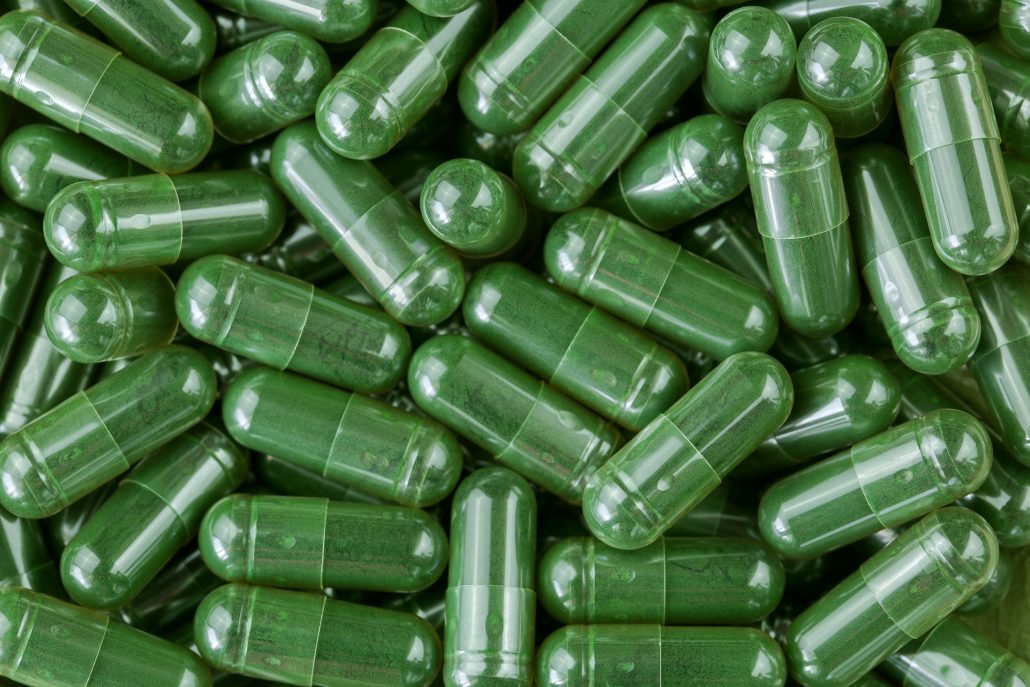
Over a year ago, it was uncovered that a Big Pharma entity spent over $500,000 to oppose legalizing medical marijuana. This is just one example of how the pharmaceutical industry working over years to influence marijuana policy in America. What was so interesting about this company’s efforts is that their own product was a sublingual fentanyl spray.
That’s the same synthetic opioid that became a major factor in the ongoing opioid crisis in America as it was integrated into the illegal drug market.
Marijuana advocates see the move from drug makers to oppose legalization as an attempt to prevent competition. Studies show cannabis can be an effective substitute for pain treatment. Many states with medical marijuana laws acknowledge it as a means to help treat chronic pain patients.
So it became even more telling when it was revealed that the same fentanyl maker undermining medical marijuana was also developing their own synthetic THC.
Insys Therapeutics VS Cannabis
This isn’t the only time we have written about the shady dealings of Insys Therapeutics. Some may recall back in 2017 when the former CEO and founding father of the company had criminal charges brought against him, along with other company executives, for racketeering and corrupt marketing schemes.
For years, Insys has been trying to sway marijuana policy decisions. In 2011, the Big Pharma racket wrote to the DEA expressing opposition to loosening restrictions on naturally derived THC. In the letter Insys claims “the abuse potential in terms of the need to grow and cultivate substantial crops of marijuana in the United States.”
But later in 2016 the company petitioned the DEA to loosen restrictions on synthetic versions of CBD, which is another key component of the cannabis plant. Why? Because they were developing a CBD-based drug to treat pediatric epilepsy. At the time, Insys Therapeutics made a statement claiming their opposition to the marijuana legalization proposition was because, “it fails to protect the safety of Arizona’s citizens, and particularly its children.” However, the company did insist that is believed in the benefits of cannabinoids.
Now, the company accused of aggressively pushing an incredibly potent and potentially lethal opioid drug onto patients who did not need it is now working on another new racket- Syndros.
Syndros: Synthetic THC
As a chief financial backer of the opposition to medical marijuana in Arizona, Insys Therapeutics has worked hard to give itself a monopoly on the market.
Syndros is a synthetic version of the THC compound found in the cannabis plant. This is the main psychoactive component of the substance and is behind a lot of the controversy around marijuana legalization. However, Syndros was approved by the FDA to treat cancer and AIDS patients for symptoms including:
- Nausea
- Vomiting
- Weight loss
This drug is very similar to Marinol, another synthetic THC product that was already approved by the FDA to treat anorexia in cancer and AIDS patients.
Syndros and its generic variations are considered a Schedule II of the Controlled Substances Act. This acknowledges it for medical benefits, but indicates a “high potential for abuse.” So it is on the same level as prescription painkillers, morphine, and cocaine.
Meanwhile, marijuana is still a Schedule I drug, meaning the FDA still considers it more dangerous than morphine, Oxycontin and now synthetic THC.
Dronabinol Debate
Dronabinol is a synthetic THC nasal spray that was quietly granted a Schedule II classification about a year ago. The FDA allows it to be prescribed, sold and federally regulated. This is another product from Insys Therapeutics capitalizing on the components of cannabis while the company fought to smother any competition.
Ironically, in 2007 the company had admitted in a disclosure statement to the Securities and Exchange Commission (SEC) that if cannabis or synthetic cannabinoids were legal “the market for dronabinol product sales would likely be significantly reduced and our ability to generate revenue and our business prospects would be materially adversely affected.”
So in short- they adamantly opposed medical cannabis efforts for years in order to limit competition. Meanwhile, they were developing their own drugs derived from cannabis. But it was not enough for the company to oppose cannabis legalization efforts. Insys also worked to disrupt other Big Pharma companies from trying to create generic versions of its drug.
Shutting Out Competition
Now, according to publicly available documents, Insys has tried to extend its monopoly over its oral dronabinol product. In October 2017, Insys Therapeutics requested that the FDA decline applications from competitors seeking to produce generic versions of Syndros. They’ve already sued two such drug companies:
- Par Pharmaceuticals
- Alkem Laboratories
Each had submitted Abbreviated New Drug Applications (ANDA). And ANDA is the first step in the process of gaining approval for generic versions of existing drugs. The request from Insys consisted of two parts:
- It asked the FDA to decline to “receive or approve” any ANDA applications that didn’t establish “in vivo bioequivalence” to its drug.
- Asked that ANDA applications for its drug “include fed and fasted state bioequivalence studies.”
Essentially, Insys was claiming that Dronabinol was too complex to be replicated by generic competitors.
However, the FDA eventually denied the company’s petition.
Robin Feldman is a professor of law and director of the Institute for Innovation Law at UC Hastings College of the Law in San Francisco. She literally wrote the book on all the ways mainstream pharmaceutical companies try to subvert generic competition. When discussing the language used in Insys petition to the FDA, she states:
“Companies pile these exclusivities on one after another to keep generic competitors off the market as long as possible. So the reason I laughed is what you are seeing is a multipronged effort by the brand company to stave off generic entry as long as possible.”
Insys has been able to enjoy some time cornering the market on synthetic THC products. But apparently, it is very likely that more companies will be able to get in on the racket pretty soon.
The Other Synthetic Marijuana
Then there is the other synthetic marijuana sold on the streets, which is very different and extremely dangerous.
Meanwhile, we have seen countless stories in recent years of the synthetic THC products made on the streets for recreational use and how these chemical compounds have resulted in outbreaks of overdoses. Infamous brands like Spice and K2 are designed to mimic the properties of natural marijuana. However, these synthetic cannabinoids can cause a range of adverse side effects, including:
- Seizures
- Psychosis
- Cardiac arrest
These are the more dangerous synthetics made in unregulated labs with chemical cocktails that are unpredictable and frequently toxic. Thousands of people have been hospitalized over the years due to the synthetic THC on the street. There are even dozens of fatalities attributed to illicit synthetic THC products.
Again, these are two different variations of synthetic THC. Synthetics like Spice or K2 are not quite the same thing as medications produced by companies like Insys. However, it should at least give some pause to consider that they are being created with the same intention- to artificially manufacture the effects of cannabis.
Drug Makers Want Marijuana Monopoly
Officials all over America are calling out Big Pharma companies for pushing to stop cannabis legalization efforts. Some say many of these drug companies are just trying to sell more drugs that addict patients. Essentially, the argument is that pharmaceutical companies are actively making a profit from drugs containing marijuana constituents while lobbying to prevent medicinal cannabis growth and development.
So do companies like Insys have the best interest of the patient in mind? Can a company accused of questionable tactics and supposedly illegal kickbacks be trusted with a monopoly on synthetic THC? Or are they just want a monopoly on marijuana-derived substances?
And if opioid makers get to dominate the market on synthetic THC products, will they be willing to put more people at risk of drug abuse and addiction in order to maintain their dominance?
Whether it’s natural cannabis, illicit synthetic marijuana, or medical synthetic THC, the risk for substance abuse should be taken seriously. Marijuana use disorder is a real issue that affects a lot of people across the country every day. If medical marijuana products are going to continue to evolve, our treatment of marijuana use disorder has to evolve with it. Innovative and holistic treatment options can make all the difference.
Marijuana use disorder is a very real issue that people struggle with all over America. If you or someone you love is struggling with a substance use disorder, such as chemical dependency or addiction, please call toll-free now to speak with a specialist today. We want to help.
CALL NOW 1-888-922-5398
by Justin Mckibben | Mar 20, 2018 | Donald Trump, Drug Dealers, Drug Policy, Drug Trafficking, Fentanyl, Heroin, News, Opioids, Prescription Drugs, Synthetic Drugs, War on Drugs

The fight against prescription opioid abuse, heroin, and fentanyl in America continues to intensify. Our political landscape may soon see even more drastic shifts because of it. Controversy and conjecture have surrounded many ideas brought to the table on both sides. Even the President himself has been behind some pretty divisive propositions. Then Monday, President Trump unveiled his plan for combatting the ongoing opioid crisis in America while in New Hampshire.
During his speech, the President talked up a few key elements of his plan; some we have heard of before, and others have only recently become a serious topic of conversation. As the administration puts the final touches on their proposals, we thought should take a look at some of the highlights and see which of his plans could actually work, and why experts and advocates believe others probably won’t.
Arguably, there are some pretty good ideas here… and some pretty bad ones, depending on who you ask.
An Opioid Vaccine
Let’s kick this off on a high note.
The Trump opioid plan includes supporting the search for a vaccine. This honestly seems like a good ambition to get behind, but will it work? Researchers at the Walter Reed Army Institute of Research and the National Institute on Drug Abuse developed an experimental heroin vaccine back in December. So far the compound has been tested with rats and mice. Their latest breakthrough found that antibodies in the vaccine bound to the heroin before crossing the blood-brain barrier. This reaction effectively prevents the euphoric effects of the drug.
While this is an exciting development, it is still a vast leap to go from treating mice to treating humans. We still have a long road ahead before this possible vaccine could be approved. However, more funding and resources from the federal government could make a big difference.
Even so, it is important to note that this vaccine will not be a cure-all answer that fixes everything. After all, we have seen opioid blocking methods before. Drugs like Vivitrol and other implants were also developed to hamper the effects of opioids, and they still haven’t stopped the crisis from growing. Experts are already saying this vaccine will only work in the short term and require repeated doses. It is expected to be an incredibly expensive treatment, and it may only be another variation of the Vivitrol shot. Still, some believe this vaccine, used alongside other treatment methods, could be a crucial tool in fighting opioids.
Big Pharma and Prescription Drugs
The Trump opioid plan also takes a look at prescription opioids. The President acknowledged the contribution of pharmaceutical companies and prescription drugs to the opioid crisis. In his statement, he indicated that this administration support research for opioid alternatives.
“That includes federal funding for the development of non-addictive painkillers.”
In talking about prescription drugs, President Trump said the administration also planned on addressing the issue of overprescribing addictive medications. He even touted the Justice Department’s new task force that may soon be fighting Big Pharma companies in court.
“Our Department of Justice is looking very seriously into bringing major litigation against some of these drug companies. We will bring it at a federal level.”
He acknowledges the recent work at the state level to hold Big Pharma accountable. President Trump said his administration will be working to reduce opioid prescriptions by 1/3 over the next three years. Hopefully, as time goes on there will not only be more accountability to those manufacturing these potent medications, but also more options for the thousands of people suffering from chronic pain who do need pain management.
Commercial Campaign
This show we have seen (fail) before. The crisis probably isn’t going to get fixed with re-runs and reboots.
For a long time, Trump has been talking about creating a media campaign to try and combat the opioid crisis. In his remarks on Monday, the president said,
“We are thinking about doing a really large-scale rollout of commercials that show how bad it is for the kids… Scare them from ending up like the people in the commercials.”
Trump said he would spend a lot of money and direct people to make the commercials depict “pretty unsavory situations” claiming that this strategy has worked before with cigarette smoking.
Sadly, the reality is that we have tried this before. Using anti-drug messaging that specifically targets kids and young adults is exactly what was done with the “Just Say No” ad campaign of the 1980s and early 1990s, and the DARE program of the same period. Neither program was proven to be particularly effective in reducing drug use. Some have even argued it did the opposite and actually intrigued young people into drug use.
This is just one part of the Trump opioid plan that reminds people of the ideas pushed in the failed War on Drugs that already destroyed countless lives and only ended up making the problem worse.
So how will this new campaign be different?
The Border
The President also mentioned the importance of combatting the flow of illicit drugs like fentanyl and heroin into the country. He became particularly energized of course when talking about his proposed border wall with Mexico, saying,
“90% of the heroin in America comes from the southern border, where eventually the Democrats will agree with us and we will build a wall to keep the damn drugs out.”
However, many are not so convinced that the wall will be especially effective in stopping drug traffickers. Support for the wall experiences ups and downs as negotiations over immigration continue. Then the President took the opportunity to scrutinize sanctuary cities, calling out California and claiming these places were harboring the most terrible kinds of criminals, including drug dealers.
If part of the Trump opioid plan is to apply even more pressure to sanctuary cities, we may see more back-and-forth when it comes to compromises on immigration policy reform. Recently the Republicans were using DACA as a bargaining chip with Democrats to get the infamous border wall built, but now Trump says Democrats are holding onto it so they can use the issue during the election cycle.
Death Penalty for Drug Dealers
Now, THIS proposal is the one part of the Trump opioid plan that is causing the most controversy, and understandably so.
UPDATE: Attorney General Jeff Sessions sent out a memo Wednesday officially asking federal prosecutors to pursue the death penalty in drug trafficking cases “dealing in extremely large quantities of drugs”. So the administration is now implementing President Donald Trump’s plan to ramp up “tough on crime” punishments in response to the opioid crisis.
In his speech, the President brought having the death penalty for drug traffickers to the forefront. This is an extreme even some of his supporters believed was more tongue-in-cheek than actual proposed policy. The details on this proposal were still pretty scarce at the time. Some support Trump pushing for the death penalty, saying this punishment would only apply to high volume, kingpin-level dealers. But what we should consider is this:
- The federal death penalty is available for a few drug offenses. This includes violations of the “drug kingpin” provisions in federal law.
- Reports indicate that Trump wants Congress to pass legislation that will reduce the amount of drugs needed to trigger mandatory minimum sentences for traffickers.
So should we assume that the President intends to expand what qualifies as “drug kingpin” activity to make the death penalty easier to enforce? If so, what does that mean exactly? And what does it mean for further enforcing other mandatory minimums?
The Justice Department has said it would seek the death penalty “when appropriate under current law.” While drug-related murder is already a capital offense, no one has ever been executed by those rules. However, President Trump says that he and the Justice Department are working very hard to change the laws. To do so would require an act of Congress, and many believe Congress is highly unlikely to expand the federal death penalty. So will any of this be changing soon?
In his comments, President Trump stated,
“If we don’t get tough on the drug dealers, we are wasting our time. And that toughness includes the death penalty.”
President Trump’s call for the death penalty is being strongly met with condemnation. The proposal’s critics range from treatment advocates to law enforcement officials and civil liberty organizations.
Maria McFarland Sánchez-Moreno, executive director of Drug Policy Alliance, said in a statement,
“If this administration wants to save lives, it needs to drop its obsession with killing and locking people up, and instead focus resources on what works: harm reduction strategies and access to evidence-based treatment and prevention.”
Jesselyn McCurdy, deputy director of the American Civil Liberties Union’s Washington office, said,
“Drug trafficking is not an offense for which someone can receive the death penalty,”
McCurdy is referring to a Supreme Court precedent that puts constraints on using the death penalty for a convicted person who did not commit murder.
Furthermore, there are plenty of arguments that this kind of policy is not practical. Some say it would either be so broad it became unconstitutional, or so specific that it would be obsolete. This aspect of the plan has sparked nationwide debate. Americans everywhere are arguing whether or not a drug dealer should be responsible for the deaths of customers.
Sadly, this is so frustrating because past data does not hold with the idea that getting ‘tough’ on drugs is more effective than offering treatment opportunities. One of the best studies backing this is a 2014 study from Peter Reuter at the University of Maryland and Harold Pollack at the University of Chicago. Researchers determined that while simply prohibiting drugs to some extent does raise their prices, there’s no good evidence that tougher punishments or harsher supply elimination efforts do a better job of driving down access to drugs and substance misuse than lighter penalties.
In fact, many addiction advocates argue that harsher punishments can actually be counter-productive because they end up punishing people who need treatment, not incarceration. So the need for a more comprehensive approach to opioid addiction treatment is paramount. Hopefully, this administration will see the need to focus on support for treatment, instead of a primarily punitive focus.
Trump Opioid Plan on Treatment
This is a critical and commendable element of the Trump opioid plan, and I applaud some of its intentions. However, I wish we could talk a lot more about this and a lot less about captial punishment.
Still, I give them credit for saying they want to increase access to addiction treatment and adopting harm reduction. There isn’t much detail to go on though, as far as how this will happen. One aspect is to increase the use of medications such as methadone and buprenorphine.
As another highlight, Trump also asks Congress to repeal a rule blocking Medicaid payments to larger treatment facilities, which could provide a boost in the billions to inpatient clinics. Hopefully, this is one factor of the Trump opioid plan that will pan out, because one of the biggest issues the US faces with the opioid crisis is a limited access to adequate treatment options. If the White House allows Medicaid to reimburse larger treatment facilities, more people will be able to get effective care. Still, it is unclear how many resources the administration is willing to commit to treatment resources.
Hopefully, the Trump opioid plan will evolve and we will see a resurgence of resources going toward helping get people suffer the help they need. It is understandable to want to curb the rise of addiction through anti-trafficking measures and raising awareness, but we already have thousands and thousands of people struggling every day all over America who need help. Preventive steps are crucial, and the President is trying to push for them. But it is vital that we also give everyone already struggling more of a fighting chance. The possibility of more people having greater access could help create a huge shift.
Palm Healthcare Company believes in providing innovative and effective holistic treatment options for those who are battling with addiction. Our facilities believe in comprehensive and compassionate care, and our mission every day is to transform as many lives as possible. Together, we can make a difference. If you or someone you love is struggling with substance abuse or addiction, please call toll-free now. We want to help.
CALL NOW 1-888-922-5398
by Justin Mckibben | Feb 1, 2018 | Drug Policy, Drug Trafficking, Fentanyl, Law Enforcement, News, Synthetic Drugs, War on Drugs
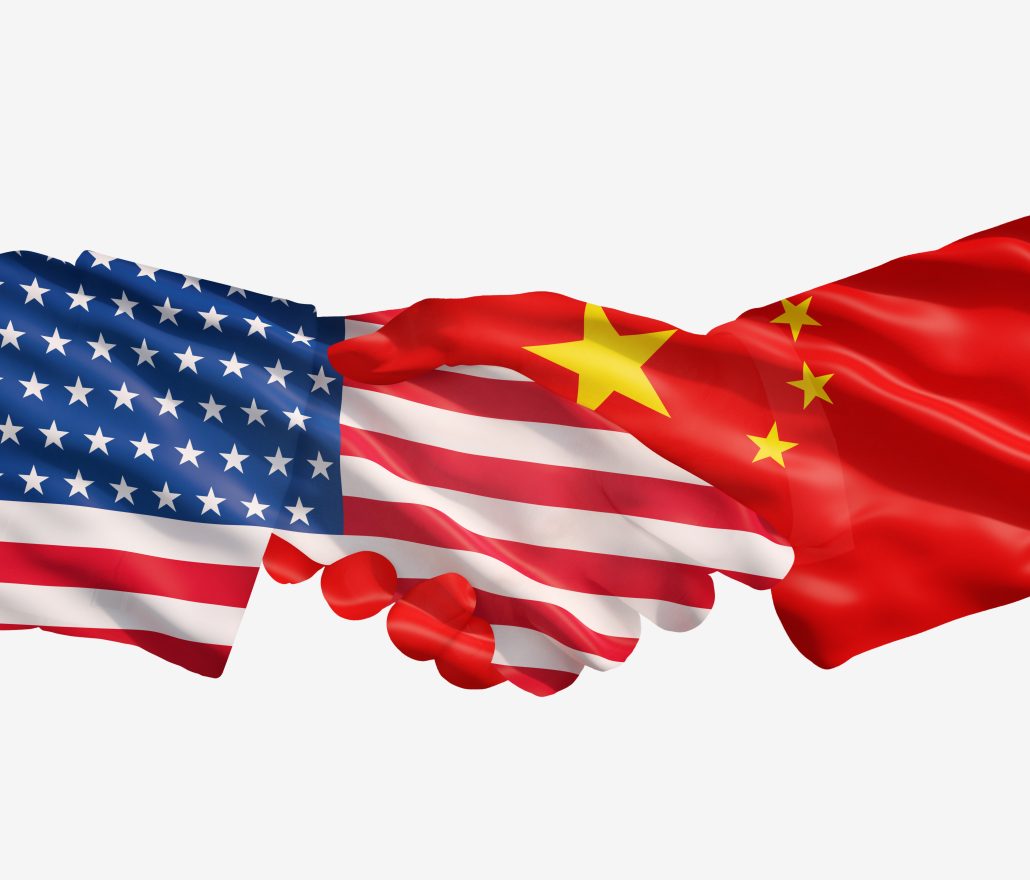
This month, Chinese and American officials are talking about new, combined efforts at combatting opioid trafficking. One spokesperson from China’s foreign ministry was quoted saying that the country is-
“…ready to work with the US to enhance our cooperation in this field.”
Back in August of 2017, we wrote about how China has been singled out by many in America as the main source of synthetic drugs like fentanyl getting into the country. Drug dealers online have been able to order shipments through websites hosted in China, making everyday package carriers into unknowing drug smugglers across the US. According to reports from the US Customs and Border Protection (CBP), seizures of fentanyl arriving by mail have increased drastically in the last few years:
- In 2011, 0.09 kilograms of fentanyl were seized by mail
- In 2016 is rose to 37 kilograms
Secretary of the Department of Health and Human Services, Tom Price, had said he firmly believed that China would be teaming up with the United States in order to end the spread of fentanyl trafficking.
Now it seems those predictions are coming to fruition, as China has announced that it intends to work with the United States to fight illegal shipments of opioids. This comes following a congressional investigation that unearthed the secret to how opioid manufacturers have exploited inadequate safeguards in the U.S. Postal System.
So how will China and America team up?
Searching for Fentanyl Sales
One of the key elements of the issue is the way packages get into the United States. Recently, the Senate Homeland Security and Government Affairs investigations subcommittee launched a probe that revealed a troubling reality. You can find information from the probe in a January 24, 2018 congressional report.
According to the report, an advanced electronic data system (AED) commonly used to identify suspicious packages only captured information on around a third of all international packages. So what does that add up to? Well, those numbers leave more than 318 million packages unscreened! That paves a very clear path for Chinese opioid manufacturers to ship lethal synthetic substances to individuals all across America.
The probe also provides details of just how easy acquiring fentanyl from Chinese manufacturers can actually be. Subcommittee staff told reporters that by simply conducting an internet search using the phrase “fentanyl for sale,” they found six “very responsive” sellers in China. Ultimately, investigators were able to identify:
- 500 online transactions involving fentanyl
- These transactions represent an estimated value of $776 million
- Can trace at least seven deaths from fentanyl in the United States to Chinese sales
To make matters worse, drug traffickers have been using each country’s own postal services against them. This major loop-hole in shipping has made a profound contribution to fentanyl trafficking.
Going Postal on Drug Traffickers
The investigation also reports that fentanyl distributors will push for investigators to pay for delivery through Express Mail Service (EMS). EMS is an international shipping method that utilizes each country’s own postal system to deliver packages. Part of the EMS network includes the U.S. Postal Service.
In an email to an investigator, one drug distributor wrote:
“Guaranteed delivery only via EMS, other shipping methods will not be guaranteed.”
Investigators claim that the EMS is the preferred method for shipping opioids into America. This is because the Postal Service failed to implement an AED system that would alert U.S. Customs and Border Protection agents about suspicious international packages. International fentanyl traffickers know how to manipulate and maneuver the postal systems. Those with the investigation also point out that surcharges are deterrents to send shipments through other delivery services such as:
This is due to the greater chance that packages will be detected. Sadly, the Senate report shows that it saw no significant improvement in collecting data on packages in 2017. However, the U.S. Postal Service (USPS) said that it has made the collection of this electronic data a priority.
China and America Teaming Up
Team USA
In a statement to the U.S. Senate Permanent Subcommittee, Ohio Republican Senator Rob Portman said that in 2016 nearly 60% of all overdose deaths in Ohio were related to fentanyl. Portman emphasizes the need for more action to stop the flow of fentanyl by stating,
“The vast majority of illegal fentanyl is purchased online from labs in China and then shipped to the United States through the mail. The federal government can, and must, act to shore up our defenses against this deadly drug and save lives.”
A USPS spokesperson said that the agency is working “…aggressively with law enforcement and key trading partners to stem the flow of illegal drugs entering the United States,”
A Customs and Border Protection spokesperson said it will “…continue to work with our government and private-sector partners to improve the efficiency of information sharing and operational coordination to address the challenges and threats…” of international narcotics smuggling.
Team China
We should note China still isn’t entirely sure that they are the major supplier of fentanyl to the US. In fact, Chinese officials have repeatedly pushed back against assessments like the one made by Senator Portman. In a press conference in December 2017, National Narcotics Control Commission official Yu Haibin said that there was-
“…little evidence showing China was the source of much of the chemicals used in the production of the powerful opioid fentanyl.”
However, it seems that China will be working toward a unified effort against fentanyl with America. Speaking on behalf of the Chinese Foreign Ministry, spokesperson Hua Chunying said that,
“Anti-drug coordination is one of the highlights of China-US law enforcement cooperation,”
Chinese officials are already working to curb sales of fentanyl and other synthetic drugs in their country. At the moment there may still be some indiscretions about China’s willingness to accept responsibility for the majority of fentanyl trafficking into America. Still, the fact that both countries have politicians advocating for cooperation against the common enemy might be a good indication of a more hopeful future in overcoming fentanyl.
If we are going to overcome the opioid epidemic, we will have to work together to face the issue at every level; whether we are taking on trafficking, breaking the stigma, or developing better opportunities for addiction treatment and recovery resources. Palm Healthcare Company is proud to work with people from all over America to help them overcome their own substance use. If you or someone you love is struggling, please call toll-free now.
CALL NOW 1-888-922-5398
by Justin Mckibben | Jan 3, 2018 | Addiction, Addiction Treatment, Donald Trump, Drug Abuse, Drug Policy, Dual Diagnosis, Family, Fentanyl, Inpatient Treatment, Law Enforcement, Mental Health, News, PAARI, Prescription Drugs, Professionals, Recovery, Sobriety, Stigma, Synthetic Drugs

With the beginning of the new year, Palm Healthcare Company is looking forward to helping spread more exciting stories of experience, strength, and hope while also sharing important news stories and exciting new developments that relate to the world of addiction recovery and substance use disorder treatment. As we commit ourselves to another year of fighting alongside thousands of people working toward a better future, we would also like to take some time looking back on all the big moments in 2017 that we shared with our Palm Healthcare Company Blog.
-
President Trump Declares Public Health Emergency: What’s the Plan?
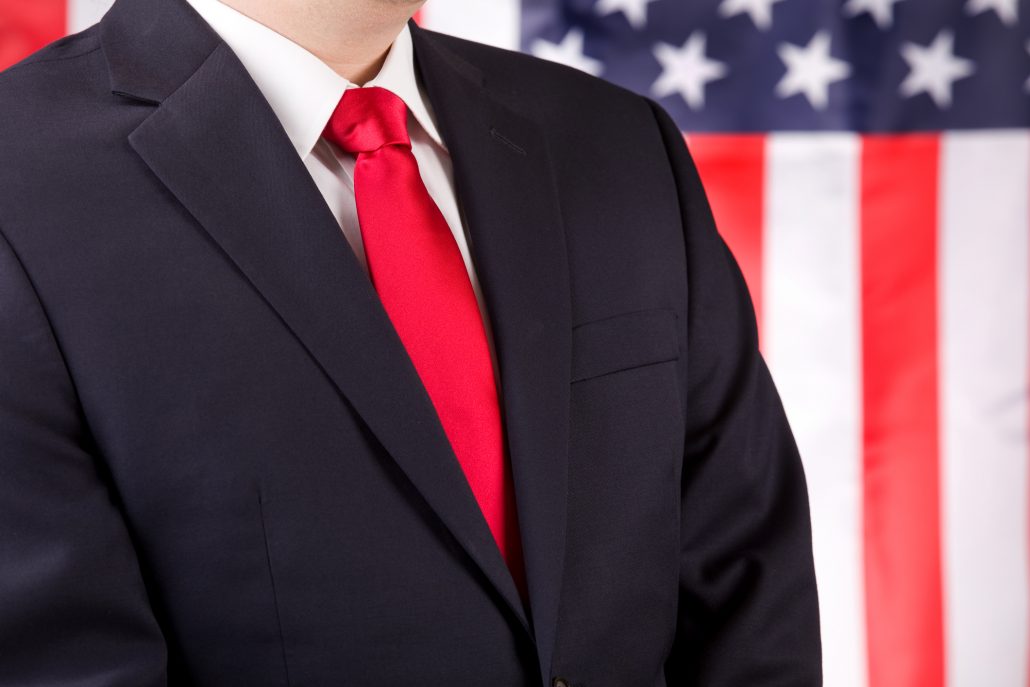
October of 2017, President Donald Trump made an announcement declaring the opioid crisis in America as a Public Health Emergency. This highly anticipated declaration was delivered in a way slightly different than many had expected, noting the technical differences between a Public Health Emergency and a National Emergency.
Many advocates were concerned that this announcement did not provide a concrete foundation for the necessary federal funding and did not initiate much-needed action, but others we assured that this means the Trump administration was taking this issue very seriously. In this article, we took a look at what this announcement did actually accomplish, and what it failed to deliver on.
-
Racketeering for Fentanyl: Opioid Maker Insys Founder Arrested for Bribes
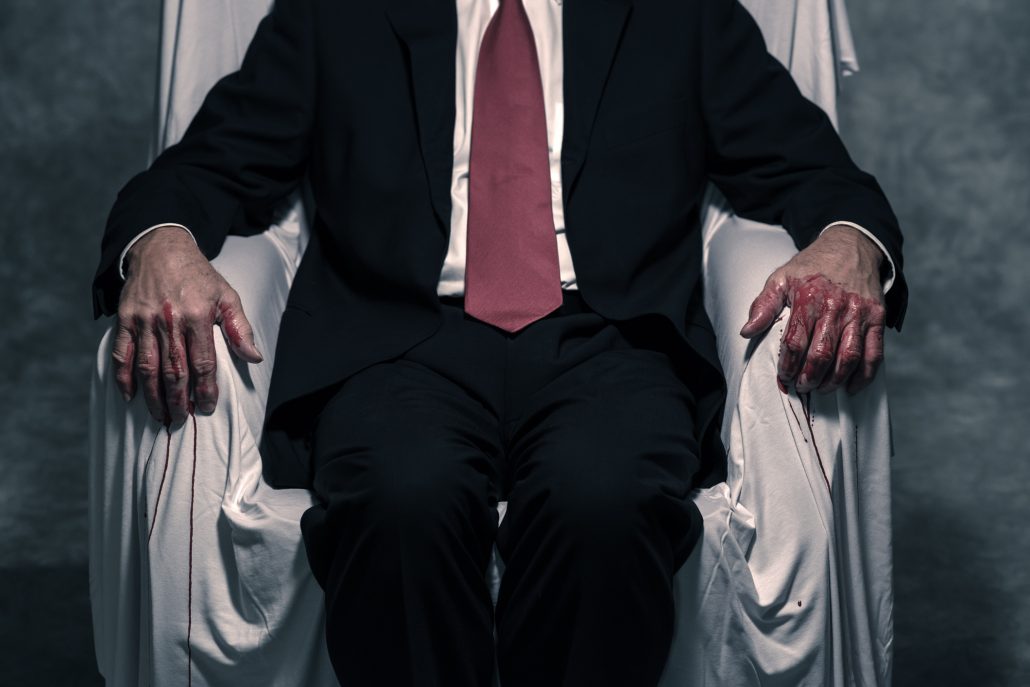
A huge development to another story came in late 2017 when John Kapoor, former CEO of Insys Therapeutics and founding father of one of the most prominent opioid manufacturers in the country, was arrested and charged with conspiring to push the signature drug of Insys Therapeutics, a Fentanyl spray called Subsys, for unacceptable uses through bribes and kickbacks.
The Palm Healthcare Company blog notes how back in 2016 the Justice Department reported to be charging 6 former executives and sales-managers of Insys Therapeutics for conspiring to defraud health insurers.
When looking at the details in this story, it has intensified the conversation about Big Pharma involvement in the epidemic
-
Can Kellyanne Conway Really Compete with the Opioid Crisis?

Not too long after President Trump’s declaration of a Public Health Emergency pertaining to the opioid crisis, Kellyanne Conway was announced as leading the charge on the White House’s efforts for addressing the opioid epidemic.
This Palm Healthcare Company blog saw a lot of comments!
While some find that having a high-profile figure at the head of the efforts gives validity to the White House’s commitment to solving the opioid issue in America, many others are speaking out in frustration. Those in opposition to this appointment say that while she may be useful as a counselor or pollster, she has no experience of expertise when it comes to drug abuse, addiction or substance use disorder treatment.
Thus far the one thing both Kellyanne and the President seem adamant about is a media campaign, but advocates are still afraid this is more “Just Say No” and not enough support for effective resources.
-
After Las Vegas Shooting: PTSD and Mental Health Must be Priority

In early October of 2016, the nation was shaken to its core when Las Vegas had one of the deadliest shootings in modern American history. This horrific tragedy flooded newsrooms and live viral footage with the country watching in shock as a gunman killed 58 people and injured 546 more at an outdoor music festival.
In the aftermath of this terrible and heartbreaking incident, our Palm Healthcare Company blog took a look at how such traumatic experiences impact people, and about the importance of those who struggle with Post-traumatic Stress Disorder (PTSD) getting proper diagnosis and care.
At a time when so many people are self-medicating with dangerous or even deadly narcotics, it is important to care for those most vulnerable, especially after such an earth-shattering experience.
-
Police Helping Addicts into Treatment is a Growing Trend Saving Lives

In August of 2017, we took a look back at several programs that had come to light all over the country based on Police Departments working with their communities to offer drug users the chance to get help with addiction treatment instead of being arrested and charged.
The pioneering program came from Gloucester Police Department in Massachusetts back in 2015. This program allowed users to ask police for help, and told addicts they could submit drugs to local law enforcement without fear of being arrested if they were willing to seek treatment. A 2016 study showed that this program was experiencing some impressive success.
Police departments in a number of other states were inspired by this and took up similar programs as a way to help their communities fight the addiction outbreak.
The Palm Healthcare Company blog took a close look at a handful of these programs to celebrate their compassion and success.
-
Sterilized for Cash: This Woman Pays Drug Addicts to Not Have Kids

Pregnant lady’s stomach and her hand holding dollar over black background
When we posted this Palm Healthcare Company blog we saw a great deal of debate in the comments on our Facebook. For over 20 years, Barbara Harris has driven across the country using cash to ask addicted women to give up their fertility. To date, the organization has paid over 7,000 people.
The controversy around such a powerful story had some people showing a great deal of support for someone giving addicted women an incentive to not get pregnant, while other people were appalled and angered that someone would entice desperate women who are not in the right mindset to make such dramatic and life-altering decisions with their bodies.
-
What Chester Bennington Taught Us about Addiction and Depression

(This content is being used for illustrative purposes only; any person depicted in the content is a model)
In July of 2017, the world lost a great artist and inspirational musician with the death of Chester Bennington, the lead singer of the band Linkin Park.
Initial reports were that Bennington had died from suicide by hanging, with later reports indicating that Chester had been drinking at the time of his death. The vocalist had been open about his struggles with depression and drug addiction over the years, and in this article, we took a look at just how much Chester Bennington could teach us about the devastation of depression and addiction.
-
Dear Media, Thank You for Bad Press
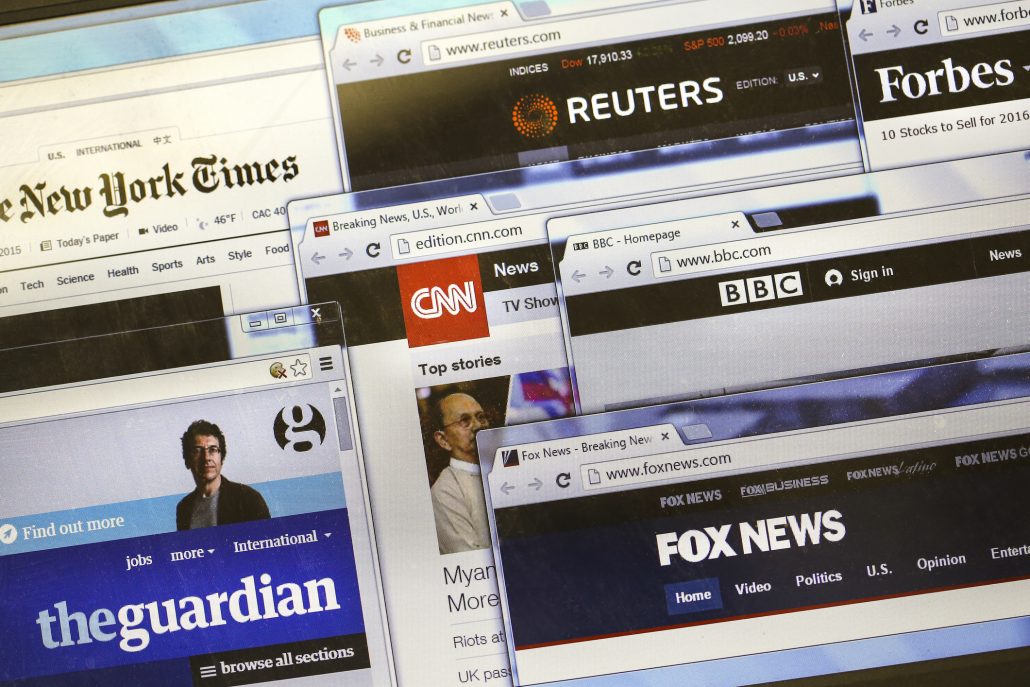
South Florida has been under a great deal of scrutiny recently, specifically concerning the issues facing the recovery community such as unethical and illegitimate sober home operators in the area. In June, there was a Megyn Kelly NBC News Investigation which focused in on Delray Beach, Florida and some of the big problems concerning unscrupulous activities from corrupt individuals exploiting drug addicts in need of help.
We took this time to look over some of the bigger stories concerning the illicit activities in South Florida with the recovery industry while showing support and gratitude for all those working together to try and put an end to operators who are taking advantage of people in need of help.
-
Palm Healthcare Measures Up to Addiction Treatment Outline for EAP
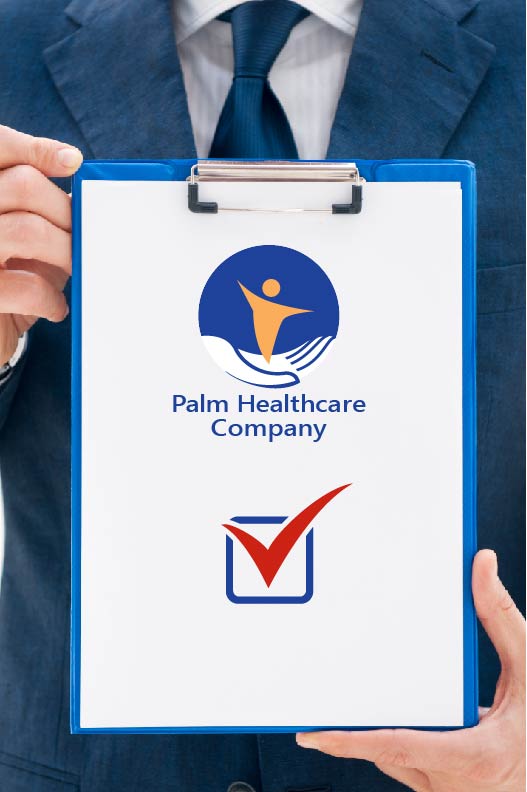
In September of 2017, we took a very close look at an article written by the Journal of Employee Assistance that was designed to help Employee Assistance Programs (EAPs) find the right kind of addiction treatment programs to recommend to their clients.
The outline given for EAPs to find effective and reliable addiction treatment options gives a list of things to look for. The Palm Healthcare Company blog was happy to show off just how all of our facilities measure up to these crucial standards.
Keep an Eye Out for More
Palm Healthcare Company continues to try and share every treatment development, news story or exciting innovation on our blog to not only help more people learn and raise awareness but to offer some perspective and maybe ask some new questions.
Whether it is sports, celebrities, news or politics we are committed to talking about important stories that pertain to drug policy in America, substance use disorder, mental health, and personal wellness. We will continue to touch on the top stories of 2018 to spread the word and hopefully inspire more people to get involved in these crucial conversations.
2017 was an intense, innovative and inspiring year. Here is to hope for 2018.
Holistic addiction treatment means incorporating every aspect of life for each individual with personalized opportunities for lasting recovery. So every bit of information can help anyone make a more comprehensive decision about what kind of recovery plan they want. If you or someone you love is struggling, please call toll-free now.
CALL NOW 1-888-922-5398
by Justin Mckibben | Dec 7, 2017 | Carfentanil, Drug Abuse, Fentanyl, Fentanyl, News, Opioids, Synthetic Drugs
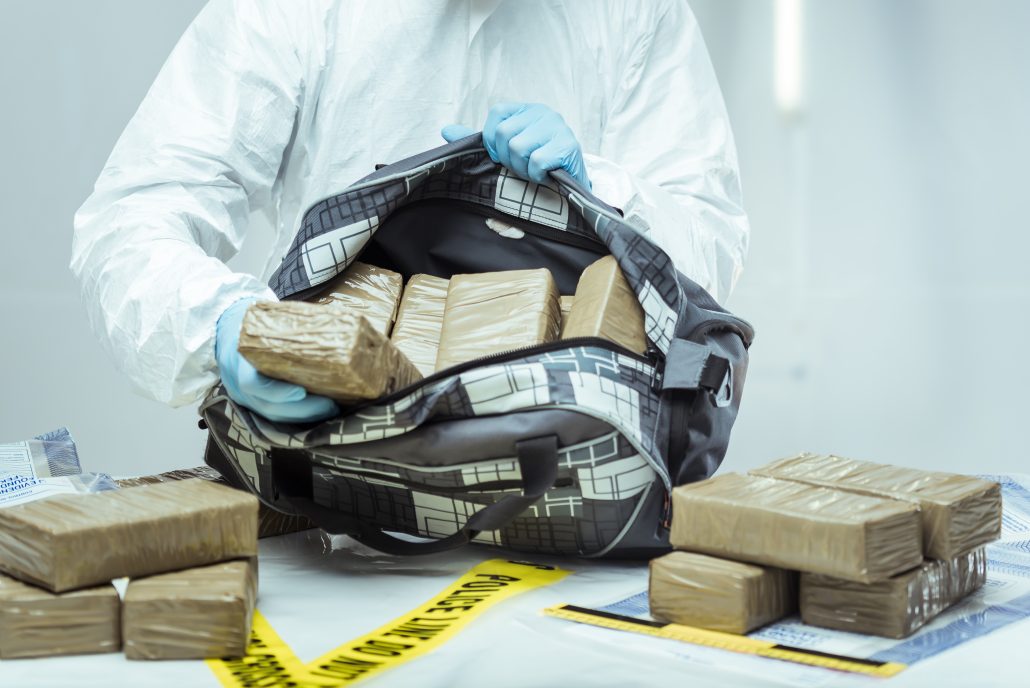
In 2014 the state of Ohio was #2 for most overdose deaths in all of America with approximately 2,744 deaths. For 2016 early estimates are putting that number at 4,149 Ohioans who lost their lives, a 36% climb from 2015, the year when the Buckeye State had by far the most overdose deaths in the nation.
On average, 11 people died every day from heroin, fentanyl, carfentanil and other drugs in Ohio through 2016.
As the nation grapples with these skyrocketing body counts from coast to coast, more government and law enforcement officials are trying to find new ways to take action against the opioid crisis. For those who do not know, fentanyl is a synthetic opioid; one of the most dangerous drugs on the illicit market.
But recently the Capital City of the Midwest has scored a huge win in that fight.
Enough to Kill Columbus
Back in October one drug bust led to investigators discovering 2 kilograms, or 4.5 pounds, of fentanyl in the trunk of a car. To put this in perspective, the Franklin County Prosecutor Ron O’Brien stated that:
- A fatal dose of fentanyl is considered to be only 2-3 milligrams.
- In Columbus, Ohio the population is approximately 860,000 people.
Crunching the numbers, the prosecutor points out this amount of the incredibly lethal synthetic drug could have killed every man, woman, and child in the city.
Three California men were arrested in relation to this bust.
Enough to Kill Ohio
Just when you think you’ve heard the worst of it, that’s not even the tip of the iceberg. The following month police in the capital city seized 20 pounds of pure fentanyl. In regards to this case, Ron O’Brien said,
“So it would probably be enough to kill all, the entire population in the state of Ohio.”
Again, using the same lethal fentanyl dosage for perspective, Ohio has 11.6 million residents. The amount of fentanyl discovered in the November bust could potentially kill more than 9 million people. O’Brien included,
“Two or three milligrams of fentanyl is not much more than five or six small grains of salt.”
So it stands to reason that 20 pounds of this drug could easily wipe out the vast majority of the inhabitants of the state.
More Record Busts this Year
The opioid epidemic is the greatest drug crisis in the history of the country. As the problem has intensified, the spread of fentanyl and carfentanil has continued to bring dead and devastation. Luckily, there are more major opioid busts this year, with some seizing enough fentanyl to kill entire populations of several states.
New York
In August officials of the Empire State managed to seize more than 140 pounds of fentanyl in August. The Drug Enforcement Administration said that amount could’ve killed nearly 32 million people. Put more bluntly, this amount of fentanyl could wipe out the populations of Texas and Oklahoma… combined!
San Diego
Back in June officials in this major California city found close to 100 pounds of fentanyl. That is enough to kill 22.4 million people; that is the combined populations of:
- New York
- New Hampshire
- Maine
St. Louis
The Gateway to the West was able to catch nearly 60 pounds of pure fentanyl back in April. That alone is enough to kill more than 13.6 million people.
Fighting the Spread of Fentanyl
Back in Ohio, Ron O’Brien and other officials know the opioid epidemic is getting worse all over the country. The Center for Disease Control and Prevention’s latest drug report states:
- More than 33,000 people died from opioid-related drug overdoses in 2015
- Close to 10,000 of them were from synthetic opioids such as fentanyl
In the state of Ohio, the opioid crisis has placed an increasing strain on resources. Financially it is costing Ohio residents between $6.6 and 8.8 billion per year, according to some experts. That is almost as much as the state spends on education for grades K-12.
Yet the fight goes on.
These massive seizures of this lethal synthetic chemical have undoubtedly saved many lives. However, putting a complete stop to the illicit drug trade is still very far off, if at all possible. Still, taking a few hundred pounds of such a potent and potentially deadly drugs off the streets makes an immeasurable difference.
For more important information on the dangers of prescription drugs, download our FREE E-BOOK “Big Secrets of Big Pharma: Why They Secretly Hope You Get Hooked”
DOWNLOAD FREE E-BOOK
Treating Opioid Abuse
Holistic drug addiction treatment is an effective and important resource for helping people struggling with substance use disorder, especially in the wake of the opioid crisis in America.
Outbreaks of more life-threatening drug problems including fentanyl and other hazardous synthetics only make the need for supportive and impactful treatment more relevant. If we want to overcome the opioid epidemic there must be an emphasis on how we treat people struggling and on how we support them through the recovery process.
Treating opioid abuse is about building a strong foundation with safe medical detox, personalized therapy, and innovative treatment opportunities. Palm Healthcare Company helps thousands of people all over the country overcome opioid abuse. Our facilities are committed to providing quality care for those dealing with drug abuse, whether it is illicit drugs or prescription drug dependence. If you or someone you love is struggling, please call toll-free now. We want to help.
CALL NOW 1-888-922-5398
by Justin Mckibben | Oct 30, 2017 | Drug Abuse, Fentanyl, Fentanyl, News, Prescription Drugs, Synthetic Drugs

In December of 2016, the Palm Partners Recovery Center blog covered a story about how federal prosecutors were bringing racketeering charges against several employees of Insys Therapeutics Inc. The initial report and the controversy that followed was a profound moment considering criminal charges are rarely ever brought against pharmaceutical companies. Now it seems that even more the corporate drug dealers who helped create the opioid crisis in America are going to be finding themselves under serious scrutiny for their unethical practices.
Last week President Trump declared the opioid epidemic a public health emergency. That very same day, as if to accent the severity of the crisis and the unignorable need for change, the co-founder of Insys Therapeutics Inc. himself was arrested on fraud and racketeering charges.
Insys Therapeutics CEO Taking a Fall
John Kapoor is the former CEO of Insys Therapeutics; a founding father of one of the most prominent opioid manufacturing companies in America. As of last week, Kapoor is reported to be charged with conspiring to push the company’s signature drug for unacceptable uses through a series of bribes and kickbacks.
The drug Kapoor and his company are accused of pushing just happens to be one of the most dangerous opioids on the market, which has contributed to countless deaths across the country over the years- fentanyl.
The brand name for the product made by Insys Therapeutics Inc is Subsys. This extremely potent compound transmits the synthetic opioid fentanyl in spray form. As an opioid analgesic, people use Subsys by spraying it under the tongue for quick absorption of potent fentanyl. Technically, this drug is supposed to only be used for treating cancer patients suffering from severe pain. But according to prosecutors that is very far from the sales strategy Kapoor and his executives were using.
With recent reports showing that approximately 64,000 Americans died last year from drug overdose, and an estimated 20,100 overdose deaths linked to synthetic opioids like fentanyl, how many of those lives were impacted by the drug Insys forced onto the market with bribes?
According to the prosecution, Kapoor and several other former high-ranking executives at the company colluded to bribe doctors to write-
“- large numbers of prescriptions for the patients, most of whom were not diagnosed with cancer.”
They also allegedly-
“- conspired to mislead and defraud health insurance providers who were reluctant to approve payment for the drug when it was prescribed for non-cancer patients.”
How did they do all this?
The Insidious Work of Insys Therapeutics Inc
Back in 2016, there was the discussion of six former executives and sales-managers from Insys Therapeutics Inc. being arrested. The charges, according to the Justice Department, included:
- Conspiring to defraud health insurers
- Conspiring to bribe doctors into needlessly prescribing Subsys, the company’s fentanyl painkiller
The scam is allegedly a long list of kickback schemes, sham speaking programs, and illegitimate gifts or services.
Sham Speaking
Allegedly, doctors and nurses were paid to attend dinners at high-end restaurants. These dinners were disguised as ‘speaker programs’ that were actually described as gatherings of friends and co-workers who had no power to prescribe medications. Supposed ‘speakers’ were paid fees of up to several thousand dollars for attending these exclusive outings.
One healthcare provider reportedly received an illegal kickback to the tune of $83,000!
All of this money to bribe doctors and other healthcare professionals to prescribe Subsys, even when inappropriate. So not only were they pressuring doctors to use their product over alternatives, but also to prescribe a dangerous and potentially fatal opioid to people who didn’t even need it.
Country-Wide Con-Artists
Other stories written about in Forbes include cases in:
In 2015 a nurse practitioner pleaded guilty to violating a federal anti-kickback statute by taking money from Insys to prescribe the drug to Medicare patients who did not have cancer.
A former Insys sales representative also pleaded guilty to a conspiracy to violate the anti-kickback statute by paying two doctors to prescribe the drug.
The state has filed multiple claims against Insys Therapeutics involving the pressuring prescriptions of Subsys for unapproved uses.
Doctors who have worked with the company are being investigated by states including:
-
New York
-
Michigan
-
Florida
-
Kansas
-
New Hampshire
-
Rhode Island
U.S. attorneys in the Central District of California and the District of Massachusetts are also investigating Insys Therapeutics Inc.
Shady Gifts and Services
The buck doesn’t stop there either. It wasn’t just cash gifts for unethical practices. Insys Therapeutics wanted their partners in crime to get the full effect of their illicit activities.
The company would send its own employees to work in doctor’s offices when the physician prescribed their fentanyl fuming drug to patients. They even hired the relatives of health care providers as a favor to the family for their loyalty to Subsys.
Insurance Fraud
They allegedly even set up a portion of their staff to defraud insurance companies by calling to speak with insurance representatives while posing as doctors. Some allegations state they were even misrepresenting a patients diagnosis to inflate drug sales.
A December of 2016 indictment states that Insys actively worked to defraud insurance companies by setting up the “reimbursement unit” dedicated to obtaining prior authorization from insurers and pharmacy benefit managers.
Other Insys Therapeutics Exes
Kapoor stepped down as chief executive in January. However, he is definitely not the only former Insys Therapeutics executive currently under fire. This is just the tip of a very rocky ice-berg. The indictment from 2016 included:
-
Michael L. Babich
Former CEO and President of the company from Scottsdale, Arizona
-
Alec Burlakoff
Former Vice President of Sales from Charlotte, North Carolina
-
Richard M. Simon
Former National Director of Sales from Seal Beach, California
-
Sunrise Lee
Former Regional Sales Director from Bryant City, Michigan
-
Joseph A. Rowan
Former Regional Sales Director from Panama City, Florida
-
Michael J. Gurry
Former Vice President of Managed Markets from Scottsdale, Arizona
On January 5, 2017, all of these defendants appeared in federal court for their initial appearance and arraignment. Each has pled not guilty and been released on conditions approved by the court. A Status Conference hearing followed on September 12, 2017 that is the first of many to be held over several months. That day Massachusetts federal judge set a trial date for October 15, 2018, for the 6 executives.
For now, we have to wait and see if any of the dirty laundries from these alleged white-collar criminals come out in the wash.
Holding Big Pharma Accountable
For a long time, Big Pharma companies have been using unlawful and corrupt tactics for marketing and distribution, which many now see has brought with it some great devastation to communities across the nation. Now, during an opioid crisis that has claimed tens of thousands of lives a year, for several years, these discretions are finally catching up to those accused of corporate greed. The DEA, FBI and Justice Department, along with several state officials and district attorneys, are now aggressively pursuing charges against Big Pharma operators who have a connection to some of the most dangerous and widely abused narcotics on the market.
The acting U.S. Attorney William D. Weinreb said in a statement,
“In the midst of a nationwide opioid epidemic that has reached crisis proportions, Mr. Kapoor and his company stand accused of bribing doctors to overprescribe a potent opioid and committing fraud on insurance companies solely for profit.
“Today’s arrest and charges reflect our ongoing efforts to attack the opioid crisis from all angles,”
Kapoor was arrested in Arizona and his indictment was filed in federal court in Boston. Prosecutors say the charge of conspiracy to violate the anti-kickback law carries the possibility of up to five years in prison. However, the charges of conspiracy to commit racketeering and conspiracy to commit mail and wire fraud each carry a maximum sentence of up to 20 years in prison. Needless to say, Mr. Kapoor is in for a fight.
But many are still wondering if these executives will truly be held accountable? And truthfully, is it even enough at this point? Even if proven to be indirectly contributing to the opioid epidemic, how could anyone ever know how many lives were damaged or lost because the powerful played around with lethal prescription drugs to line their pockets?
For more important information on the dangers of prescription drugs, download our FREE E-BOOK “Big Secrets of Big Pharma: Why They Secretly Hope You Get Hooked”
DOWNLOAD FREE E-BOOK
With recent reports showing that approximately 64,000 Americans died last year from drug overdose, and an estimated 20,100 overdose deaths linked to synthetic opioids like fentanyl, how many of those lives were impacted by drugs like Subsys being forced onto the market with bribes?
More needs to be done to stop Big Pharma companies like Insys Therapeutics Inc from exploiting the system and putting the lives of millions of Americans at risk. And not just the middle-men should be accountable, but also those sitting comfortably at the top these industries. At least this is a start. But for the individual, it all starts with taking action. Getting safe and effective treatment can not just save a life, but help someone build a foundation for a better one. If you or someone you love is struggling, please call toll-free now. We want to help.
CALL NOW 1-888-922-5398















